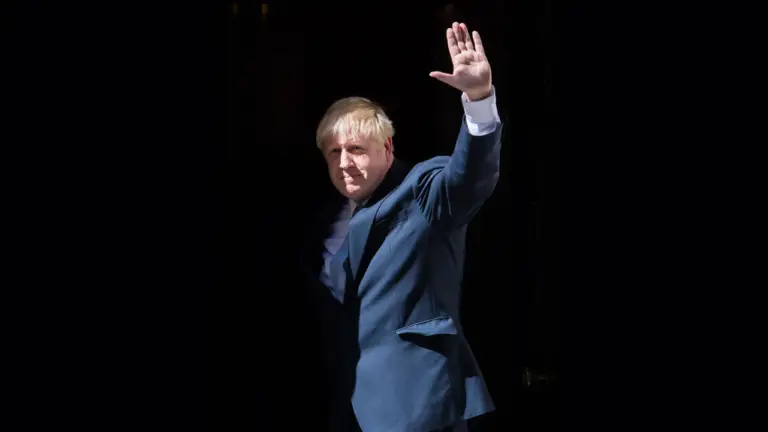PM’s resignation – current scenarios as it stands
The Prime Minister Boris Johnson has today announced he is standing down after facing a barrage of ministerial resignations (59) in the past two days, triggering the third Conservative Party leadership election in six years.
The PM has stated his intention to stay in place with his Cabinet until a new leader is announced which is expected to be in place by autumn, before the Conservative Party Conference. Yet questions remain in place as to the exact timeline of departure, which is being negotiated with the 1922 Committee, and whether he will be able to remain until a new leader is elected, or whether his hand will be forced by further Tory discontent and/or a move for a no-confidence vote by Labour.
PM steps down and remains in post during leadership election
If Johnson is successful in his intention to remain in his post, he and his newly appointed Cabinet will continue while a leadership election takes place. In this instance, the departure timetable will not be announced until next week.
As outlined in the Cabinet Manual, the expectation is that a PM who has stepped down remains in post until their successor is chosen. Whilst this scenario follows precedent, the state of Johnson’s Government is unprecedented. Johnson was insistent yesterday that there is a huge wealth of talent on the backbenches ready to replace departed ministers, however, widespread reports that calculations by Tory whips count only around 60-65 MPs remaining in support of the PM. Replacing the swathe of vacancies with such a small selection of loyal MPs is not only unworkable from a perspective of departmental policy, but it could also be rejected by large sections of the Tory party.
The Cabinet appointments announced today signal Johnson’s intention to reach out to different wings of the party (Greg Clark, for example), and the new Secretaries of State are broadly seen as capable pairs of hands. He is also drawing on some loyal names he has left within the ranks, such as James Cleverly and Kit Malthouse, with whom his relationship extends back to his time as Mayor of London. Whilst he has now filled out his cabinet, there are many other junior ministerial and PPS posts to be filled (approx. 25-30 junior ministerial positions alone).
It is unlikely that all or most departed ministers would take up their posts again to serve in a de facto ‘interim’ Government. Reports circulated this morning that many Tory MPs expected Dominic Raab or another senior Tory figure to be the next PM by the evening, and increasingly, many Tories have claimed they will not accept Johnson staying on (including Sir Bob Neill, Andrew Bridgen, Chris Loder).
There is also a strong call from the opposition that Johnson should not stay on – Labour leader Keir Starmer announced today that Labour would initiate a no confidence vote in the Commons if he does not leave now.
Now that Johnson has announced his intention to remain in place, all eyes are on what timelines will be agreed with the 1922 Committee and announced next week, and what response comes from Labour.
PM negotiates exit timeline with 1922 Committee
Johnson is in the process of ‘negotiating’ an exit plan with the 1922 Committee, who will set the timetables and guidelines for the Conservative Party leadership contest but will not be announced till next week.
It is expected that the new 1922 Executive, to be confirmed on Monday, will set out their plans and attempt to reach some form of compromise with Johnson on a workable timeline to ensure the smoothest possible functioning of Government.
What’s clear is that many Conservative MPs, along with Labour, will not be happy with the timeline set out should it not involve Johnson stepping down immediately. Johnson’s speech announcing his departure, showed little humility and instead cited an “eccentric” decision by a “herd” of disloyal MPs to try and unseat him and will have done little to win favour amongst Tories; meanwhile Labour may be initiating moves to bring forward a Commons vote of no confidence as we speak.
If the PM is forced to step down with immediate effect, with no alternative PM in place
Whilst Prime Ministers Cameron and May remained in their posts to oversee transitions after resigning without issue, Johnson does not currently have a fully stocked and functioning Government to oversee such a transition and faces plenty of opposition to the idea of him remaining as a ‘caretaker’. The question now remains as to what happens if he is forced to forgo his position immediately by a Commons vote.
Contrary to what some think, holding the position of Deputy Prime Minister (currently Dominic Raab), does not guarantee a right to succeed the premiership. It is technically the Sovereign who is responsible to ask someone to take up the post – this is of course delicate, and the Queen will want to avoid being embroiled in political controversy.
One of the difficulties here is that many of the current Cabinet are expected to enter a leadership race, and so an appointment directly from the Cabinet might be unworkable. However, as of this afternoon, Raab has announced he will not be standing for the leadership, making him the most likely candidate for a potential nomination.
Timescales and process around a leadership election
Conservative Party leadership elections take place in two stages.
The first is the shortlisting stage. In this phase, Conservative MPs who believe themselves up for the job put their own names forward, and the leader who resigns is not eligible to run in the subsequent leadership contest.
Conservative MPs then vote in a series of rounds to eliminate the less favourable candidates, and those who do not meet a certain threshold of votes are knocked out of the race. This process continues, with the last candidate based on vote share being eliminated until there are only two candidates remaining in the contest, concluding the first stage.
For the second stage, the wider party membership votes on a “one member one vote” basis for which of the two remaining candidates they prefer; the candidate who receives the most votes wins the contest and becomes Party Leader.
The timescales for each leadership contest are set out by the 1922 Committee and can vary depending on how many people put themselves forward for candidacy. In 2016, Theresa May became leader less than three weeks after David Cameron resigned, after her contenders dropped out of the race; whilst in 2019, Johnson took office two months after May announced resignation.
At the meeting of the 1922 Committee on Monday 11 July, timeframes for this leadership contest will likely be at the top of the agenda, with members keen to kick off the first round of the election ahead of the summer recess period in just two weeks.
Whilst voting can continue over the summer recess period, the Committee is said to be eager to have the first phase of voting completed by this stage. It is likely that the second stage of voting in which the Party is balloted to decide between the final two candidates will then take place over the summer months, enabling a fresh face to take the fore as Leader in the Autumn.
However, a breadth of ambitious Conservative MPs are putting themselves forward for the role of Leader which lengthens the elimination process of the election. In the interest of time and to inject some much-needed stability into the Conservative Party, it may be the case that some of the not-so-likely-to-win candidates decide to not put themselves forward or withdraw from the race early on. Alternatively, it is possible that the Committee will introduce thresholds for MPs to put themselves forward for candidacy to prevent the prolonging of the leadership contest beyond these desired time frames.





